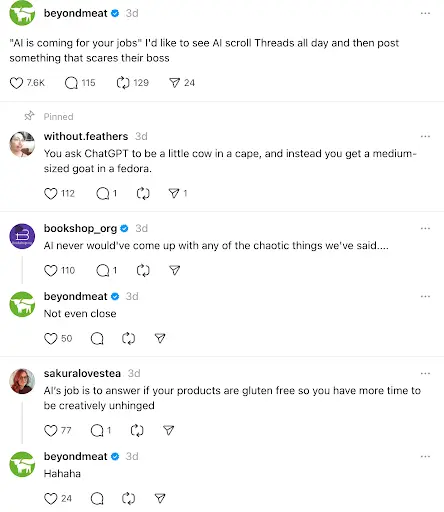If you work in ecommerce, you know all eyes were on customer experience (CX) strategies this year.
After a very long run of being seen as a reactive and cost-heavy arm of business, 2024 felt like a pivotal year for customer service teams. Economic challenges pushed brands harder than ever, making a customer-first approach not just important, but non-negotiable.
The balance of power has officially shifted—customers are in control, and customer service teams are now at the forefront of shaping business decisions.
This year, we’ve seen companies take meaningful steps toward prioritizing customer experience (CX). The benefit of focusing on retaining loyal customers over acquiring new ones has been known for years, but the bleak post-COVID economic outlook has put a much stronger emphasis on loyalty and retention strategies.
With major advances in AI over the last two years, there’s also been a dramatic shift in the capabilities of service teams, with more time and capacity than ever before to collect meaningful data and champion delightful end-to-end experiences for their customers.
Here are five customer service trends ecommerce brands will need to prioritize if they want to stay competitive and relevant in 2025.
Hyper-relevant shopping experiences supercharged by customer feedback
In 2025, it’s about creating meaningful, one-on-one connections with customers throughout their entire shopping experience, from start to finish. And while personalization has always been a point of interest for businesses, it’s no longer just about targeted ads or tailored marketing promotions.
The best customer service teams are now taking a front seat in this strategy. Brands have finally realized that customer service has a superpower that marketing lacks: the ability to have relevant and influential one-on-one communication with customers at critical high-impact moments in the journey.
Shoppers struggling to select the right size on product pages? Prompt them to live chat with an agent at the moment for a quick consultation. Struggling to retain customers after their first purchase? Send every first-time customer a plain text email from a member of your service team asking if they have any feedback about the item they bought.
Customer service teams have the incredible opportunity to meet your customers where they are, hear what they value or are struggling with, and then use that feedback to drive tailor-made experiences that are mutually beneficial to the customer and the brand.
FIGS even takes this a step further with what they call a Feedback Flywheel, actually incentivizing their customer service agents to gather and report feedback so that the company can continually act on it.
By feeding insights from customer interactions back into your business, you can refine everything from product recommendations to communication strategies. The brands that succeed in 2025 will use every interaction to better understand their customers, focus on what matters most to them, and build feedback loops that benefit the entire organization and give your customers an experience they can’t find anywhere else.
Flexible payment and refund options
When it comes to payments, customers want fast, frictionless options—and they expect you to deliver. The economic challenges of 2024 made flexible payment solutions even more critical, but payments are just one part of the equation and customer service teams have started to identify that.
Refunds and exchanges need to be just as seamless. In fact, returnless refunds are becoming increasingly popular, with companies like Amazon, Walmart, and Target leading the charge and setting new standards. Many ecommerce brands are seeing big impacts on customer trust and loyalty by eliminating the requirement for their customers to ship unwanted items back.
Pet brand Chewy has followed suit and encourages customers looking to return low-value items to simply donate them or gift them to a friend, rather than deal with the hassle of shipping it back. Not only does this reduce strain on their customer service team, but it also creates an opportunity for organic advocacy from their customers to the people around them
In 2025, the brands that simplify these processes will stand out. By removing unnecessary friction, you’ll not only meet customer expectations but also turn service interactions into opportunities to strengthen your relationship and create a “wow” moment that they’ll recount to friends and family members.
White-glove customer service
Speed and convenience are non-negotiable in ecommerce, and customers won’t stick around if your service can’t keep up. Gone are the days of waiting on hold for a customer support agent. Today, you need to meet your customers wherever they are—and fast.
In our research on 2024 customer service benchmarks, we found that the best companies tend to respond to customer tickets within 2 minutes.
Over the last few years, the integration of AI into support tools and the rise of omnichannel support means that customers have come to a quicker and easier resolution of issues than ever before, and they’re bullish on showing their loyalty to brands that deliver.
In 2025, expect channels like SMS and WhatsApp to play an even bigger role in ecommerce customer service. These channels allow you to provide instant, personalized support and even re-engage customers at critical moments, like when they’re about to abandon their cart or can’t find the information they need to make a purchase decision.
Jones Road Beauty does this exceptionally well. When their customers abandon cart, instead of sending them a generic email that puts the onus on customer, they immediately shoot them a friendly text message from a customer service rep, offering concierge-level support.

You can ensure speedy resolution without sacrificing that vital human touch by integrating tools like AI-powered chatbots alongside live agents. This “white glove” approach shows your customers that you value their time, which builds loyalty and keeps them coming back.
The right blend of AI and human support
AI has made great strides in customer service over the last couple of years, but the early days weren’t without hiccups. In 2023 and 2024, overreliance on automation led some brands to deliver robotic, impersonal experiences that hurt their reputations.
According to recent research by Salesforce, 74% of customers now express concerns over unethical uses of AI and 80% say that it’s important for humans to validate the AI output coming from brands. The message from consumers is loud and clear: they prefer a human-centered approach.
The secret to success in 2025 is balance. AI should be used strategically—to handle repetitive tasks and provide quick answers—while freeing up your team to focus on complex, high-value interactions. This “human-led, tech-supported” approach ensures that customers feel valued and heard and aren’t subjected to frustrating automated interactions.
The rise of AI has underscored a timeless truth, great service fundamentally relies on the human touch. While AI can enhance efficiency and support, the empathy, creativity, and problem-solving abilities of a skilled support team remain irreplaceable. For example, Beyond Meat has embraced a customer engagement strategy that prioritizes authenticity over automation. Rather than employing AI in their social media support, they leverage these platforms to foster genuine, human-centered interactions that align with their brand values.

Get this balance right, and you’ll create an experience that keeps customers coming back.
Human-first outsourcing
Outsourcing customer service isn’t new, but the way it’s done is evolving. In 2025, ecommerce companies will demand more from their BPOs. Customers expect top-tier service, and that means outsourced teams need to feel like an extension of your brand, not a separate entity.
Leading BPOs are stepping up and investing in employee experience to ensure their teams deliver exceptional service. There’s a proven link between happy employees and happy customers: when your team feels supported and empowered, they’re more motivated to go above and beyond.
Expect to see more outsourcing partners focusing on brand voice, empathy, and skills training in 2025. For fast-growing ecommerce brands, quality outsourcing offers the best of both worlds: scalability and consistent, high-quality service that feels personal to your customers.
At Peak Support, our dedication to hiring only the highest-quality talent is the differentiator between simply outsourcing your customer service versus enhancing your brand with it. With the highest Glassdoor rating in the industry, we’re able to provide you with a support team who truly cares about your brand’s reputation and whose quality of service reflects that.
Looking ahead
The best ecommerce customer service teams in 2025 will be all about meeting customers where they are—whether that’s through hyper-personalized experiences, flexible payments, or fast, seamless support.
By staying ahead of these trends and focusing on building strong human connections, your ecommerce brand can turn customer service into a true competitive edge.
The future of ecommerce is personal, proactive, and customer. Are you ready to embrace it? Book a consultation with us to talk about how we can help you stay ahead of these trends.

